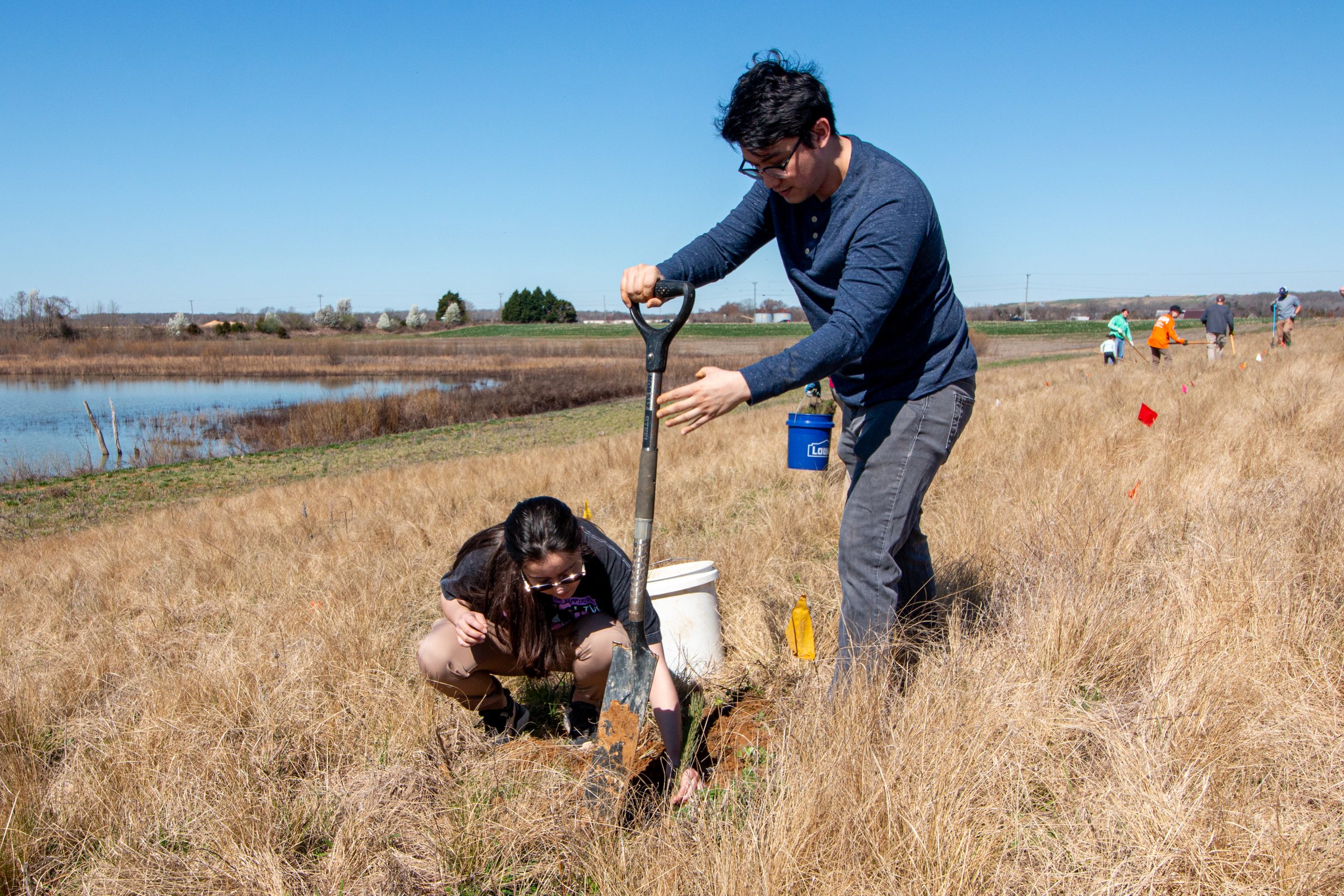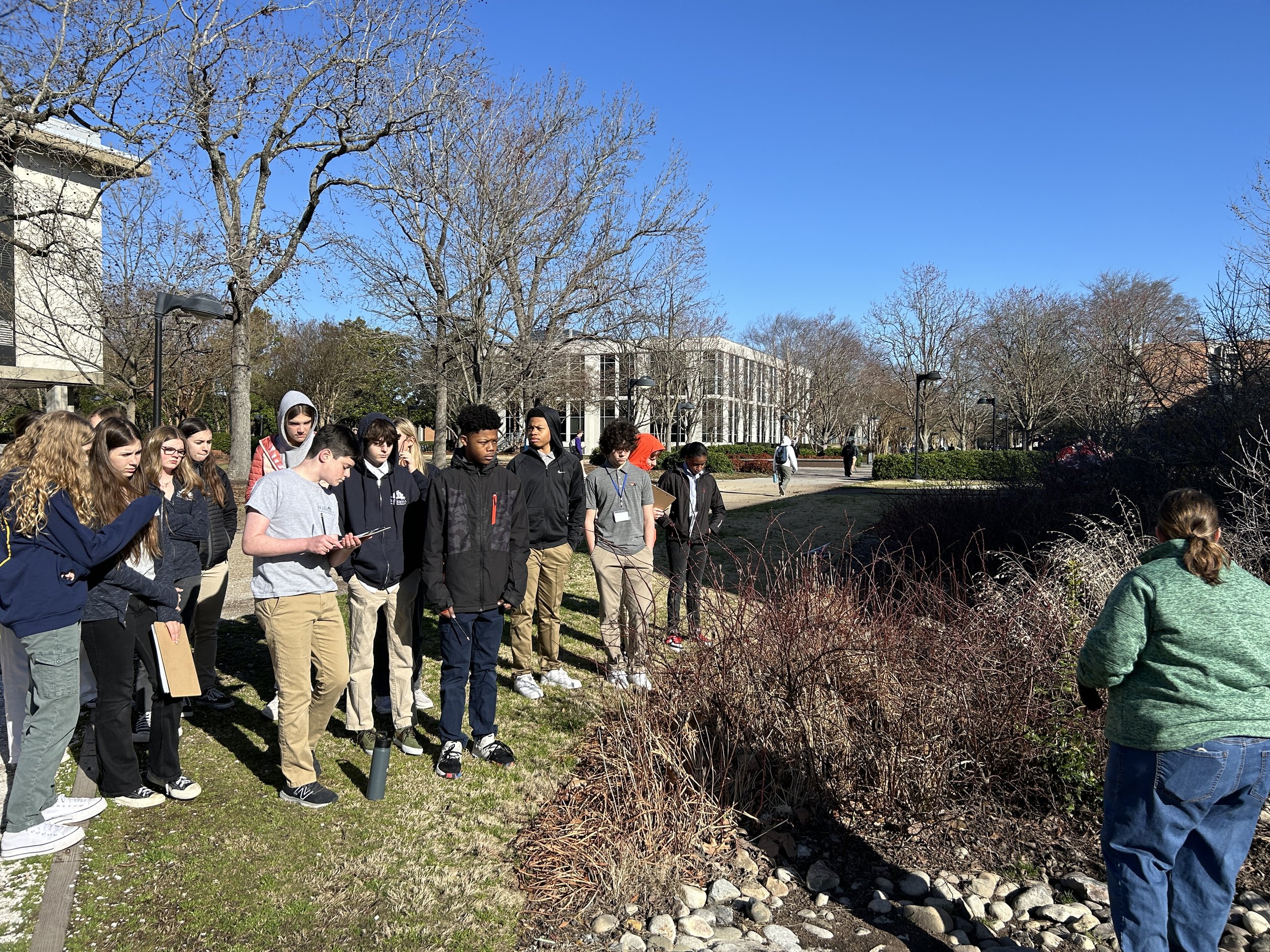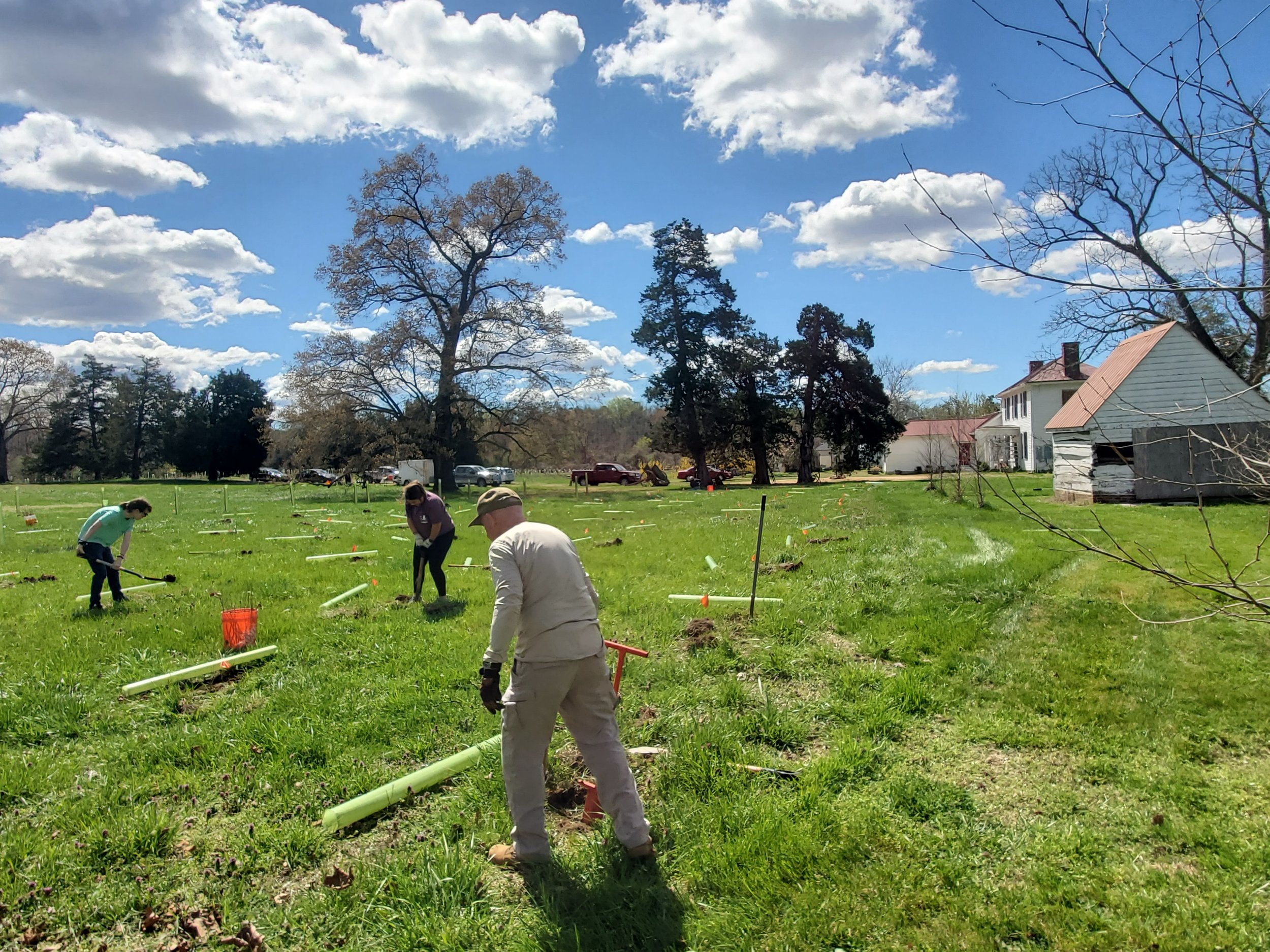
Living Infrastructure Initiative
Mission of the Initiative
To enhance Virginia’s natural resilience by providing advanced training and technical assistance to professionals involved in the design, installation, maintenance, and funding of nature-based water management projects; to provide grant funding for living infrastructure projects throughout Virginia’s coastal region; and to expand the network of living infrastructure professionals throughout the Commonwealth.
Living Infrastructure Programs
Photo credit: CBLP
Chesapeake Bay Landscape Professional Program
The Chesapeake Bay Landscape Professional (CBLP) program is a comprehensive training and certification initiative designed to enhance the skills and knowledge of professionals committed to sustainable landscape management in the Chesapeake Bay region. With two levels of certification, the program offers a robust curriculum that covers foundational and advanced principles in green infrastructure, conservation landscaping, and stormwater management.
In addition to the certification programs, CBLP offers specialized professional and workforce development courses that address specific aspects of sustainable landscape managemen, including the CBLP-Buffers, CBLP-Shorelines, and CBLP-Crews courses. The CBLP-Associate program introduces youth and young adults to fundamental concepts in green infrastructure and conservation landscaping.
Level 1 is a baseline credential in design, installation, and maintenance of sustainable landscapes, with emphasis on properly maintaining stormwater best management practices (BMPs), while Level 2 caters to experienced professionals and delves into complex design and implementation techniques for green infrastructure and conservation landscapes.
Through these varied offerings, the CBLP program is building a greatly needed resilience workforce. CBLP equips a wide range of professionals with the knowledge and practical experience needed to contribute effectively to conservation efforts, fostering a community of skilled practitioners dedicated to the restoration and preservation of the Chesapeake Bay and its surrounding ecosystems.
Resilient Shorelines Program
Recognizing that shorelines are dynamic transition zones between the water and land, we are engaged in three collaborative efforts working to build resilience along Virginia’s coasts and waterways. We seek to maximize the water quality and habitat benefits that can be achieved through combining shoreline and riparian buffer restoration, and to increase the potential for wetlands migration in response to sea level rise.
We serve on the Steering Committee and as Training Team lead for the Living Shoreline Collaborative (video introduction here), a regional partnership working to increase implementation of living shorelines in the tidal James River watershed. Through this partnership we developed and piloted CBLP-Shorelines and serve as a liaison to neighboring regional efforts in coastal Virginia.
We serve as a co-lead for the Knowledge Network Team of the James River Buffer Consortium, promoting the use of research-based methods that improve the success of buffer restorations.
Finally, we are thrilled to announce the launch of our exciting new resource, "Designing Living Shorelines for Sea Level Rise in Virginia." This comprehensive guide is tailored specifically for shoreline professionals seeking sustainable and adaptive solutions to combat the challenges posed by rising sea levels and coastal hazards.
Native Biodiversity Program
As the "living" component of living infrastructure, native plants are the foundation of sustainable landscaping, requiring fewer inputs of water, fertilizer, and pesticides to thrive. They filter pollutants from stormwater, clean the air, improve soils, and provide habitat for bees, butterflies, birds, and other wildlife. They are also beautiful additions to home and public landscapes. These plants have evolved in our region to withstand, and even thrive in, the heat, drought, and humidity of long summers and the cool, wet conditions that winter brings.
As a founding member of the Virginia Native Plants Marketing Initiative, we contribute to production of the Native Plant Guide for Southeast Virginia and serve as Co-Coordinator for the Plant Hampton Roads Natives Campaign. The guide provides information on the selection and care of native plants that are well-suited for home landscapes and is free to download.
Integrating native plants into yards and public spaces creates a network of productive, beneficial green spaces that contribute to better human and environmental health.
Adaptation Education
To prepare the next generation to face the environmental changes ahead, Wetlands Watch is creating educational materials to inspire and empower youth to engage with sea level rise and climate adaptation. These materials turn our expertise into interactive, place-based lessons that align with Virginia’s Standards of Learning and other key frameworks, helping teachers and students across the state tackle the climate challenges in our region.
We’ve already completed the first year of this program with 8th-grade capstone students at The Williams School in Norfolk. These students shared real-life experiences of flood days disrupting their school schedules. In the 2024-25 school year, we’re partnering with Virginia Beach School System’s Environmental Studies Program to adapt our curriculum for AP Environmental Science classes, involving more students, teachers, and standards in the process. We’re also working to expand access to the Chesapeake Bay Landscape Professionals (CBLP-Associate) certification, which gives high school students credentials for careers in green infrastructure.
Our staff is certified in Meaningful Watershed Education Experiences (MWEE), ensuring our place-based approach aligns with regional efforts by the National Oceanic and Atmospheric Administration (NOAA) and our partners.
Photo Credit: Friends of the Rappahannock
Coastal Resilience & Trees Fund
As climate change intensifies, strengthening the resilience of our coastal regions is more important than ever. The Coastal Resilience & Trees Fund (CRTF) supports small-scale green infrastructure projects that increase our coastal communities' ability to adapt to and recover from flooding and other extreme weather events. Administered in partnership with the Virginia Outdoors Foundation, this grant program is designed to be a flexible and accessible funding source for applicants and projects that traditionally have difficulty qualifying for other types of grants.
2024 Update: Program Paused
Please note that the program has paused future grant rounds. All previously awarded grants will continue without interruption.
Leadership
Stacie McGraw is Wetlands Watch’s Living Infrastructure Programs Director. She is a Level 1 Certified CBLP, a Certified Urban Stormwater Professional, Southeast Virginia Regional Co-Coordinator for the Plant Virginia Natives Initiative, and a Member of the Living Shoreline Collaborative Steering Committee. She has previously served as the Education Program Coordinator, and then as Executive Director, of the Virginia Horticultural Foundation.







